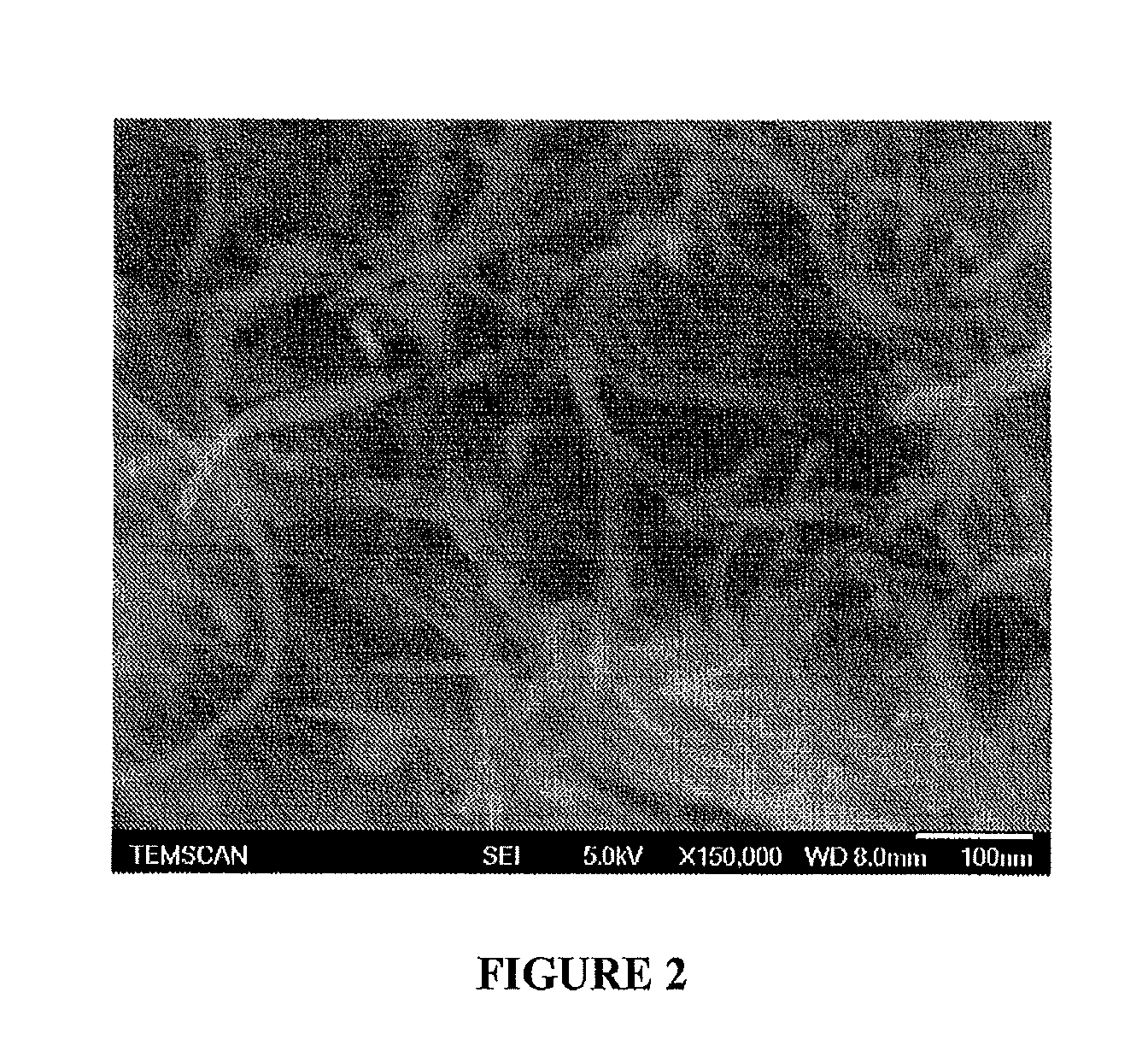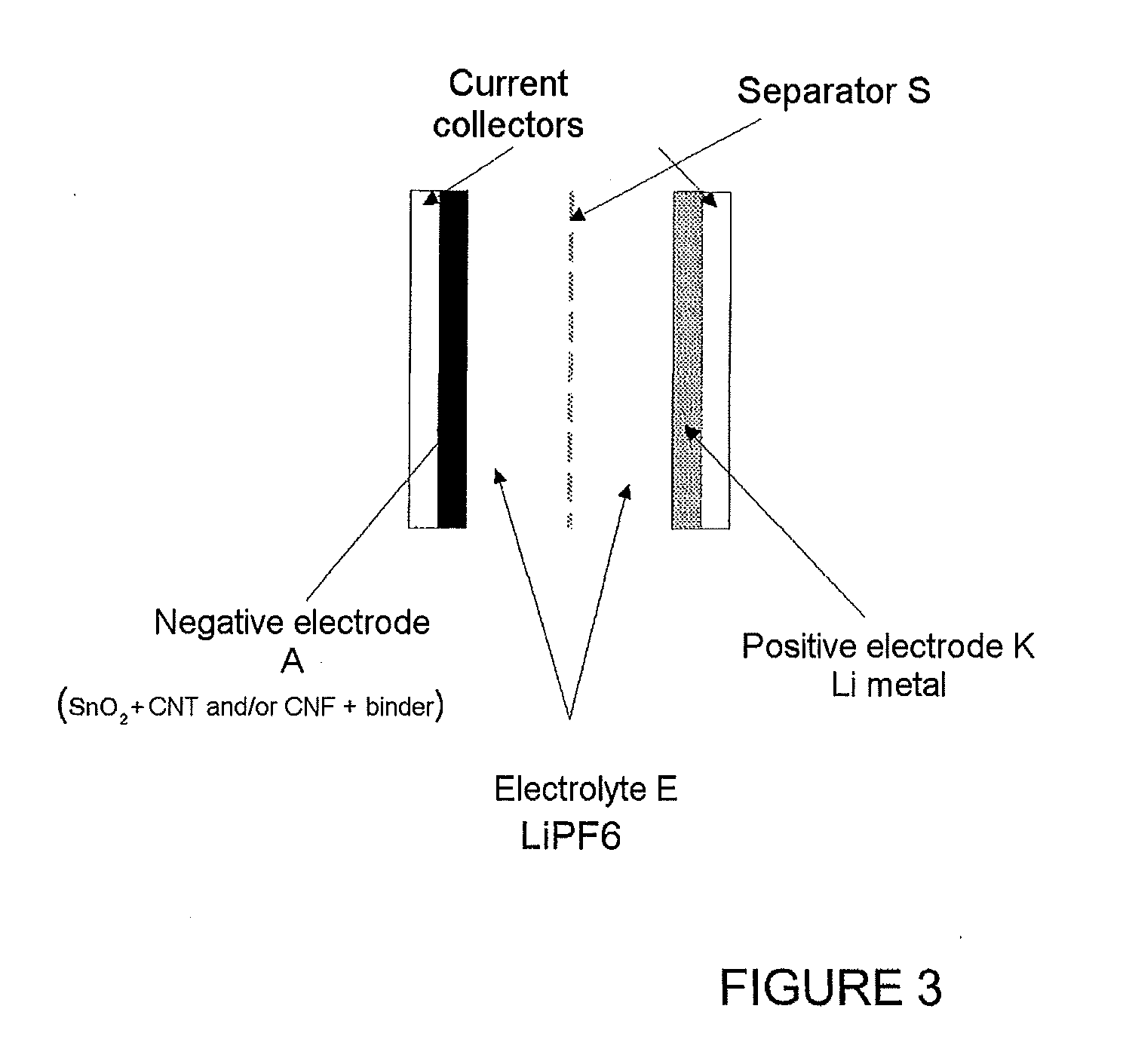METHOD FOR MANUFACTURING A COMPOSITE MATERIAL OF SnO2 AND CARBON NANOTUBES AND/OR CARBON NANOFIBERS, MATERIAL OBTAINED BY THE METHOD, AND LITHIUM BATTERY ELECTRODE COMPRISING SAID MATERIAL
a technology of carbon nanotubes and composite materials, which is applied in the direction of non-metal conductors, cell components, conductors, etc., can solve the problems of high irreversibility at the start, limited service life, and ineffectiveness
- Summary
- Abstract
- Description
- Claims
- Application Information
AI Technical Summary
Benefits of technology
Problems solved by technology
Method used
Image
Examples
example 1
[0083]Specific example of implementation of the process for manufacturing the composite. In this example, use is made, as fibrillar carbon-based material, of CNTs that are purified in order to obtain a better attachment of the tin particles as described previously.
[0084]The applicant has observed that the carbon nanotubes after synthesis are not suitable for the process. In order for the particles of tin oxide to adhere, it is necessary that the surface of the nanotubes exhibits polar surface functional groups of OH and / or COOH type. These functional groups are obtained by treatment of the nanotubes in a strong acid such as HNO3 (oxidizing acid) or H2SO4 (not very oxidizing acid), which treatment is followed by a surface oxidation operation using sodium hypochlorite if the acid used for the purification is not sufficiently oxidizing.
[0085]Other oxidizers, such as H2O2 or O3 may also be used without compromising the scope of the invention.
[0086]This observation is also true when it i...
example 3
[0105]This example repeats the test conditions from Example 2 but replacing, in the synthesis, half of the carbon nanotubes, i.e. 0.5 g, with 0.5 g of carbon nanofibers (by way of example, these are carbon nanofibers sold by Showa Denko, the diameter of which is 150 nm).
[0106]Before preparation of the composite, these nanofibers were treated in the presence of sodium hypochlorite.
[0107]A negative electrode A is then manufactured with this new composite. The reversible capacity drops at the end of the first cycle but is maintained at around 870 mAh / g for more than 30 cycles. After 60 cycles, the capacity of the composite remains above 750 mAh / g.
[0108]The nanofibers are capable of ensuring electrical connections over long distances and the carbon nanotubes act more at the local level.
[0109]Indeed, the nanotubes appear to play the role of “elastomeric” material for accommodating the volume variations, and also of short-distance electrical connectors between particles whilst the nanofib...
PUM
 Login to View More
Login to View More Abstract
Description
Claims
Application Information
 Login to View More
Login to View More - R&D
- Intellectual Property
- Life Sciences
- Materials
- Tech Scout
- Unparalleled Data Quality
- Higher Quality Content
- 60% Fewer Hallucinations
Browse by: Latest US Patents, China's latest patents, Technical Efficacy Thesaurus, Application Domain, Technology Topic, Popular Technical Reports.
© 2025 PatSnap. All rights reserved.Legal|Privacy policy|Modern Slavery Act Transparency Statement|Sitemap|About US| Contact US: help@patsnap.com



